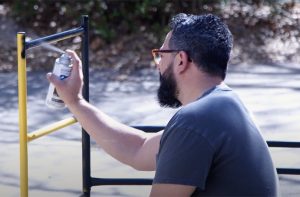If you’ve been following the Videvo Twitter or Instagram, you may have noticed that we’re a little bit obsessed with stock video footage. Which is probably a good thing actually, given that that’s what we do.
Let’s face it though: sometimes stock footage can look, well, like stock footage. And although we love nothing more than telling you guys all the wonderful and exciting ways you can use stock footage, we realised something… What’s the point of knowing you can use stock footage for your video project if you don’t also know how? So we’ve decided: not only are we giving you video clips for free, we’re also going to give you some free advice! Because who doesn’t love unsolicited advice?
Specifically, this article is a collection of advice on ways you can customise our stock videos to suit your own purposes. It’s basically a showcase of what our footage is capable of. Because we love it. And because you should love it too. (Did we mention, it’s free?) And although the list below is refers to tools you’d find in Adobe Premiere Pro, any decent editing program will let you do similar stuff.
So here’s a list of some cool stock footage transformation ideas and – most importantly – how to pull them off.
1. Day to Night
Sometimes life is hard. Sometimes shooting nighttime B-Roll is hard. Sometimes there’s just no avoiding the fact that you have to have a night time establishing shot, you can’t do it yourself, and you’ve been scouring all the stock footage websites but all of the clips that would work for your project have been filmed in daylight. Whew. Are you emotionally exhausted just reading that? We are.
It’s okay though! Following these easy steps, we’re going to show you how you can turn something like this spooky stock video of an abandoned house…

…Into something like this!

The process is actually pretty simple. It starts – as you might expect – with making your footage darker:
- Using the lumetri color tool, reduce the saturation, exposure, highlights and black tones of your clips.
- Increase the white tones and the contrast.
- Reduce your red and green tones on your RGB curve.
- Using the lighting effect, add a blue-coloured spotlight for moonlight, and use yellow-coloured omni-light for any indoor illumination.
- Finally, duplicate your clip to the layer above, and remove your Lumetri and Lighting effects. Draw a mask around any areas – such as windows – that you want to illuminate.
- Then, on that top layer, reduce the saturation and increase the exposure.
And it’s as easy as that! If only it were as easy in real life to turn a derelict hut into a cosy-looking cottage!
2. Video to Cinema
We don’t think we’ll ever get over the sheer number of Hollywood movies that use stock footage. Along with music videos and TV credits, stock footage is a badly kept industry secret. And thanks to the democracy of the internet, there is absolutely nothing stopping those of us who aren’t famous Hollywood directors from doing the same thing.
Famous movies are colour-graded by a whole team of experts. But you don’t need to be an expert to get a cinematic colour grade. Videvo stock footage has already been colour-corrected, correctly exposed, and saturated to sensible levels. So all that’s left for you is to give it that Matrix or Wes Anderson inspired look! Luckily for you, there’s even a quick and easy way to get most of it done in one go.

- Import the clip you want to colour-grade to your timeline.
- Import an image or video which has your desired colour-grade effect into the same sequence.
- Open lumetri colour, and select Colour Wheels & Match > Comparison View. In the preview window, scrub through your timeline, until your image appears in the Reference side of the comparison view.
- Select Apply Match and then make any additional tweaks to the saturation, contrast, tint and exposure.


Like any good Blade Runner fan, one movie just wasn’t enough. Check out another Blade Runner 2049 inspired colour-grade below:

3. New to Old (or Old to New)
Hold on to your horses, we’re about to stray beyond the magic powers of lumetri colour correction for our final tip. Sadly, though we’re capable of many things, we haven’t quite mastered time travel at Videvo. Luckily for you, however, we’re going to show you how to fake it!
We all know that the olden days were black and white, but it’s sometimes easy to forget that – along with the advent of full-blown technicolour – aspect ratio has changed a lot since then as well! One of the easiest things you can do to make a clip seem old-fashioned or more modern is change the aspect ratio. And with a couple of extra tweaks, you’ll be asking yourself whether you’re reading this in 2020 or 1920.
(If you are reading this in 1920, then we strongly urge you to get in touch and explain to us exactly how you’re doing that.)
- Change the Aspect Ratio of the clip to 4:3 or 1024:768. You can do this in your sequence settings.
- Reduce saturation and add a vignette using lumetri color
- Add film grain effect using the noise tool. Remember to deselect ‘use color noise’
- Using the posterize time tool, reduce the frame rate to 8-12 frames per second, for that authentic old-timey jerky movement.
The best thing about this transformation, is that the steps can be used individually to create other cool effects! Slow down the frame-rate without making the other adjustments to give your stock videos a stop-motion animation effect. Or just tweak the aspect ratio for a stock clip that will work the best for your chosen online platform.
For example, simply flipping the aspect ratio from it’s original 16:9 aspect ratio to 9:16 makes this clip look like it’s being played on a smartphone!
Though this does conclude our teeny tiny list of ways you can radically transform your stock clips, we hope it’s got you thinking about customising stock footage for your video projects. So go forth, prosper and use these tips to transform stock videos! (Or – dare we say it?- apply them to your own clips.)
All we can ask for really is that we’ve sown the seeds of inspiration. And if, as a result, anyone wants to show us what a day-to-night cinematically colour graded old-fashioned video looks like, who are we to deny them?





